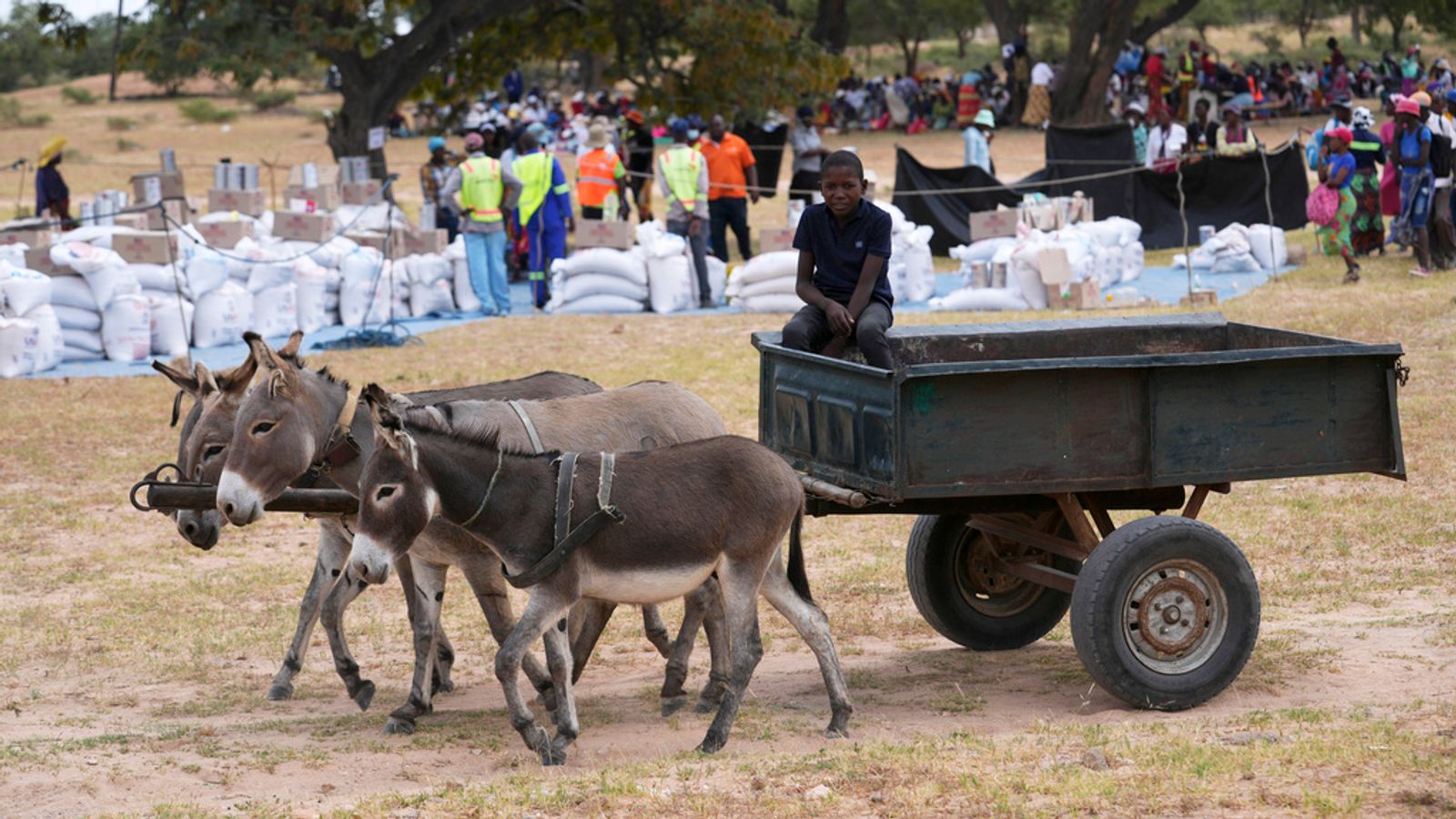Zimbabwe is on the brink of declaring a national disaster as a deepening drought leaves millions facing hunger.
A huge area across the Zambia, Zimbabwe and Botswana border has just endured its driest February in decades, according to the United Nations’ World Food Programme, devastating harvests of some crops.
But the dry conditions are biting further still, with a delayed start to the rainy season, followed by general low rainfall, has parched Angola in the west to northern and central Mozambique in the east.
An estimated nine million people have been impacted by the drought in Malawi, along with more than six million in Zambia, UNICEF said.
Both countries declared a state of emergency last month.
Officials in Zimbabwe are considering following suit, where approximately 2.7 million people are at risk of hunger.
Read more: ‘Famine is setting in’ in Gaza, international court rules, ordering Israel to take action
Faulty sewage spill monitors spark accusations of ‘environmental cover up’ by water firms
UK greenhouse emissions fall as high energy bills see homes cut back on electricity
What does boom in resource-hungry data centres mean for our future energy plans?
The regional drought has scorched the crops that tens of millions of people grow themselves and rely on to survive.
Zambian President Hakainde Hichilema said that almost half (one million) of two million hectares of his country’s staple corn crop have been destroyed.
In Zimbabwe’s notoriously dry Mangwe region, even drought resistant crops like the cereal grain sorghum and pearl millet have failed to survive this year’s hot and dry conditions.
Southern Africa’s parched land has been blamed on the El Nino climate pattern that releases heat from parts of the Pacific Ocean every two to seven years, bringing varying impacts around the world.
In southern Africa, it means below-average rainfall, sometimes drought, and is being blamed for the current situation.
There are different types of droughts and causes are complex and varied.
But scientists who specialise in assessing the causes of extreme weather are confident climate change is making drought worse in southern Africa.
Globally hunger levels fallen in recent decades.
The United Nations’ Food and Agriculture Organization (FAO) estimated one in three people in developing countries suffered from hunger in 1970. This figure plunged to one in 10 people in 2015, though lately progress has slowed.
Sub-Saharan Africa has consistently suffered the highest rates of undernourishment, and rates have even risen since 2010.










